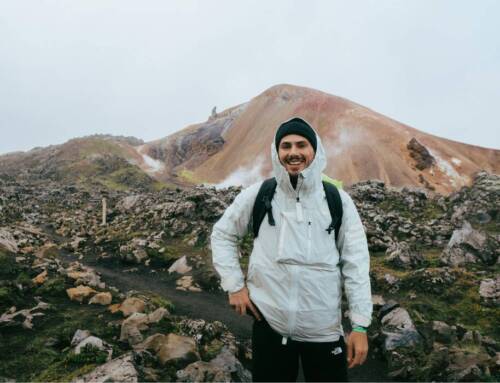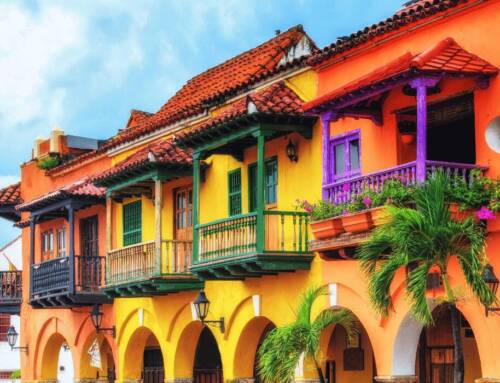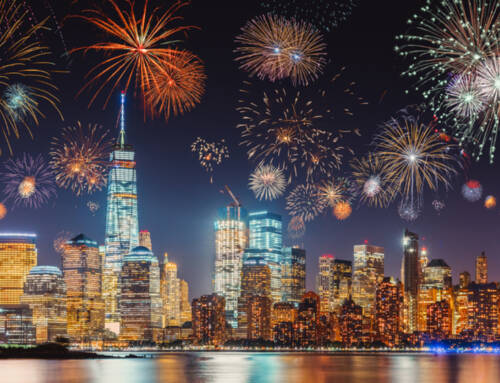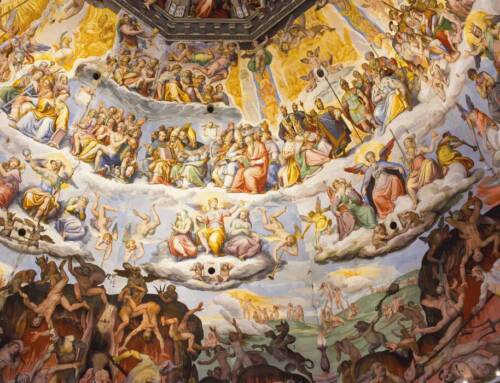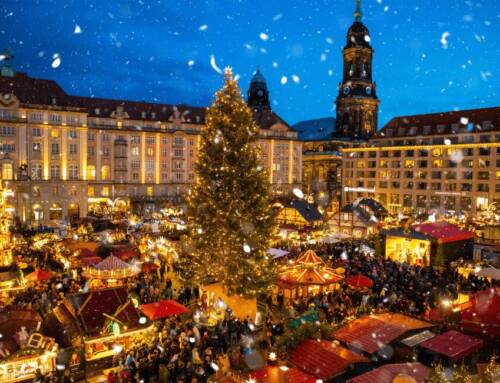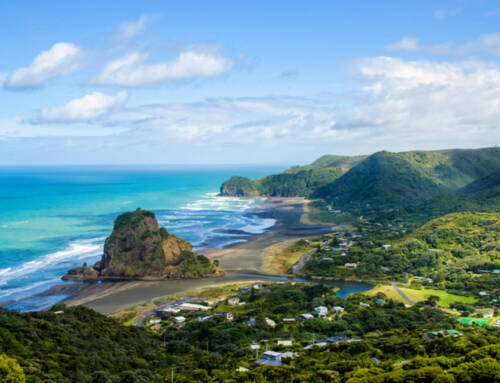Canada is striking not only for its nearly ten million square kilometers of land—it’s the second-largest country in the world after Russia—but also for its rich cultural heritage and stunning landscape diversity. From magnetic cities to wild beaches, glaciers, lakes, forests, and frozen tundras, every corner of this vast territory has something fascinating to offer. Perhaps the real challenge lies in deciding what to see in Canada or which must-visit spots to include in your itinerary.
Best travel insurance for Canada
Index
Introduction to the country: facts and figures
With a population of 41 million, Canada is a melting pot of customs, religions, ethnicities, and languages—a mix that Canadians proudly embrace. In fact, multiculturalism was officially recognized as a state policy in 1971, marked by the creation of a dedicated ministry and a law encouraging every individual to promote this value in their daily life.
Culture and education
Canada’s cuisine reflects this cultural fusion, shaped over the years by British, French, and Indigenous influences. Notable dishes include poutine—fries topped with cheese curds and gravy—smoked salmon, and tourtière, a traditional meat pie from Quebec. We also can’t forget the classic maple syrup and ice wine, the latter made from grapes that ferment while still frozen on the vine.
One of the foundations of Canada’s socioeconomic progress is its access to quality education. Since 2007, Canada has led the G7 nations in the percentage of post-secondary degree holders. On a global scale, it ranks among the most educated countries. According to data from the World Population Review, between 58% and 76% of Canadians aged 25 to 64 have completed tertiary education.
Territory
It may come as a surprise, but much of Canada is uninhabited and claimed by nature. Though it is slightly larger than the United States, Canada has only 11% of the U.S. population. In fact, about 90% of its land area is unpopulated.
In terms of world records, Canada boasts more lakes than the rest of the world combined—around three million, accounting for 20% of the world’s fresh water reserves. It is also home to 10% of the planet’s total forests. Some of its national parks are even larger than entire countries. Canada also has the longest coastline in the world, stretching about 202,080 kilometers.
Canada is a year-round destination, particularly appealing for fans of winter sports and outdoor activities like kayaking, snowboarding, ice skating, skiing, and hiking, to name a few.
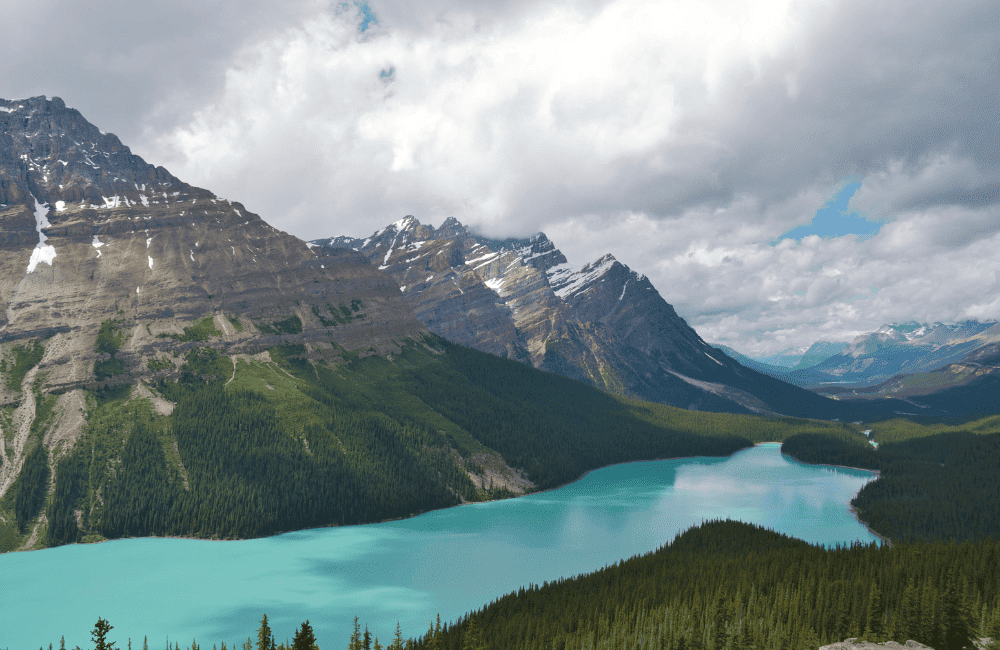
Which cities to visit in Canada
Urban options abound to suit every traveler’s taste and profile. Expect architecture with European influences, cities nestled between oceans and mountains, a balance between modernity and tradition, and non-stop entertainment. If you’re planning a trip to Canada, these cities should be on your must-visit list:
Toronto
One of the cities that earns the “must-visit” label is Toronto, located on the shores of Lake Ontario. Not only is it the largest city in the country and the financial capital, but it also stands out for its cosmopolitan and international vibe, with charismatic neighborhoods like Little Italy, Greektown, and Chinatown. Its rich cultural offerings include concerts, dance performances, theater productions, food festivals, and museum exhibitions.
At the cultural heart of the city is the Royal Ontario Museum, the country’s largest institution dedicated to world culture and natural history. Toronto’s skyline is dominated by the iconic CN Tower, a broadcasting tower that, at over 500 meters tall (about 147 floors), held the title of the tallest structure in the world until it was surpassed by the Burj Khalifa in Dubai in 2007. The Toronto Stock Exchange and various corporate headquarters share the city with green spaces like High Park and the Toronto Islands. The latter, ideal for a break from the urban hustle, are accessible by a ferry that departs from the Jack Layton terminal.
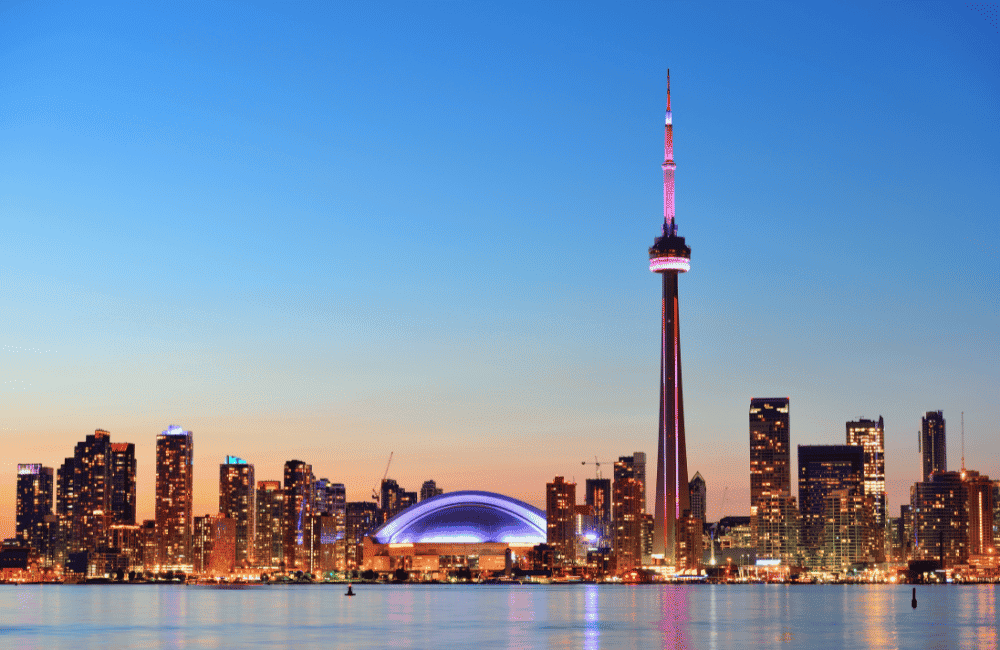
Vancouver
Nestled between the mountains and the Pacific Ocean, Vancouver rises along Canada’s west coast. This prime location draws tourists eager to take advantage of ski and snowboard season, go kayaking, or summit the nearby peaks. With a growing focus on urban sustainability and a thriving culinary scene, Vancouver strikes a perfect balance between natural beauty and the energy of a major metropolis.
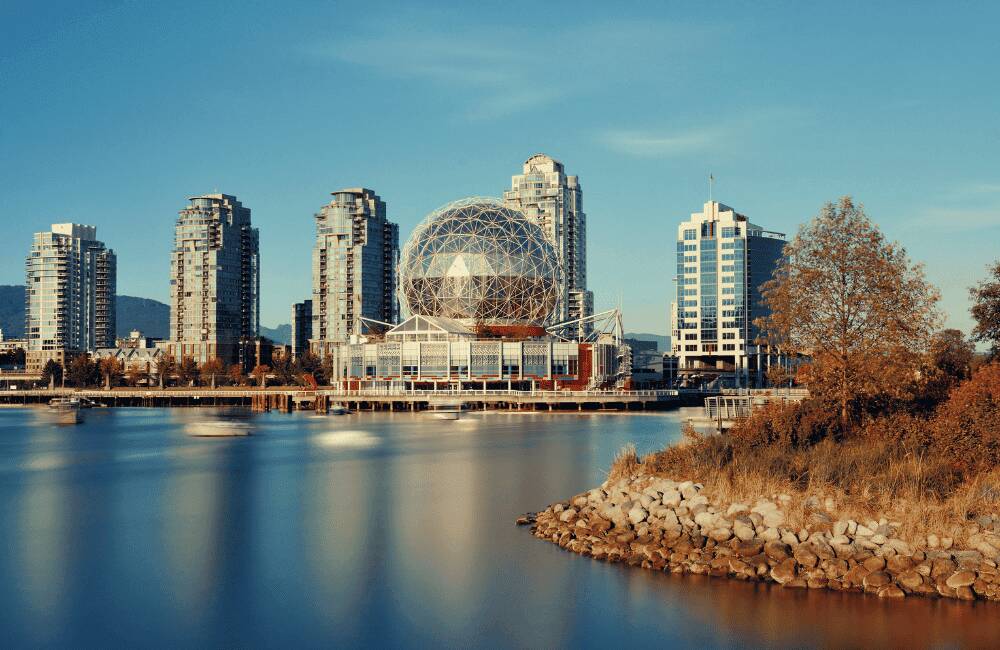
Quebec
The Old Town of Quebec City stands out as the only walled city still standing in North America. It was also the first North American city to be listed as a UNESCO World Heritage Site. This area is home to the iconic Le Château Frontenac hotel and the charming Petit Champlain district, filled with fashion boutiques and bistros.
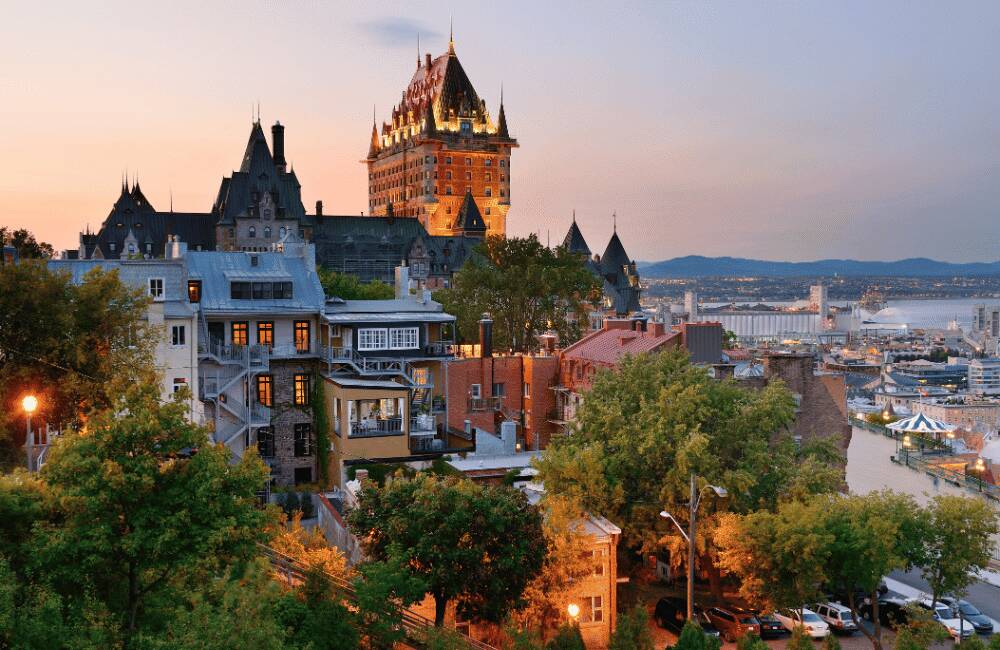
Montreal
Speaking of cultural blends, we can’t leave out Montreal, located in the province of Quebec. The city’s architecture clearly reflects French influence—and not just because French is the official language of the province. You might even feel like you’ve suddenly been transported to Paris as you stroll along cobblestone streets and take in sights like the neo-Gothic Notre-Dame Basilica or the Hôtel de Ville, which now serves as city hall. As a fun fact, Montreal is the second-largest French-speaking city in the world after Paris.
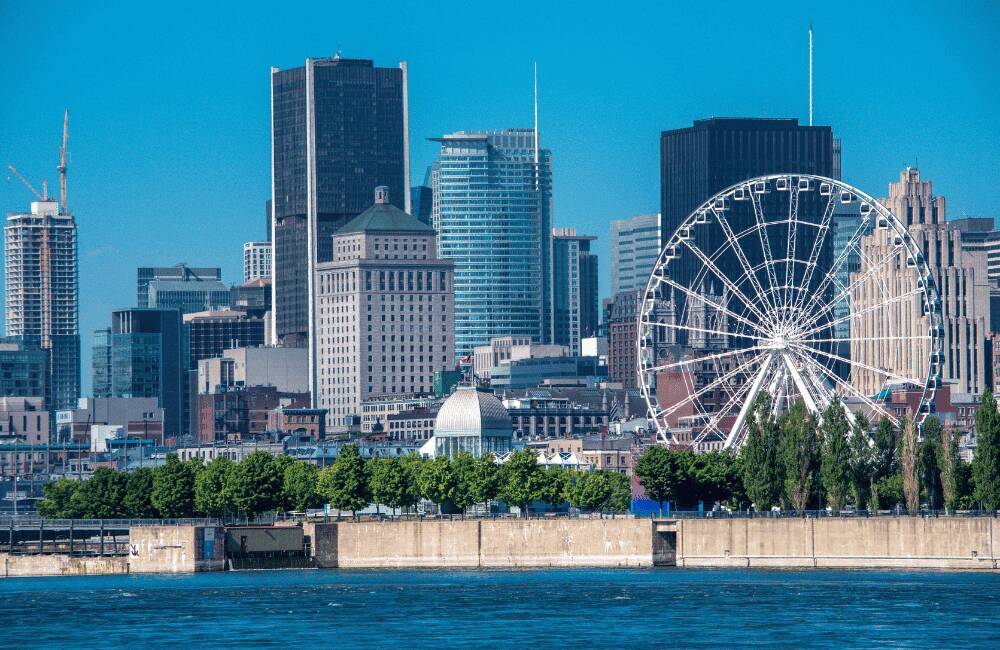
Captivating landscapes: places to visit in Canada
Niagara Falls
Among the many must-see natural wonders in Canada are the Niagara Falls, whose powerful cascades form a postcard-perfect scene that’s hard to forget. The crystal-clear lakes of Banff National Park mirror the snow-capped Rocky Mountains, while the night skies over Jasper and its ancient glaciers tell stories of long-forgotten times.
From icy terrain, we move to the Canadian Badlands in Alberta—a dramatic landscape shaped by wind into red-hued canyons and ridges where dinosaur fossils can still be found today.
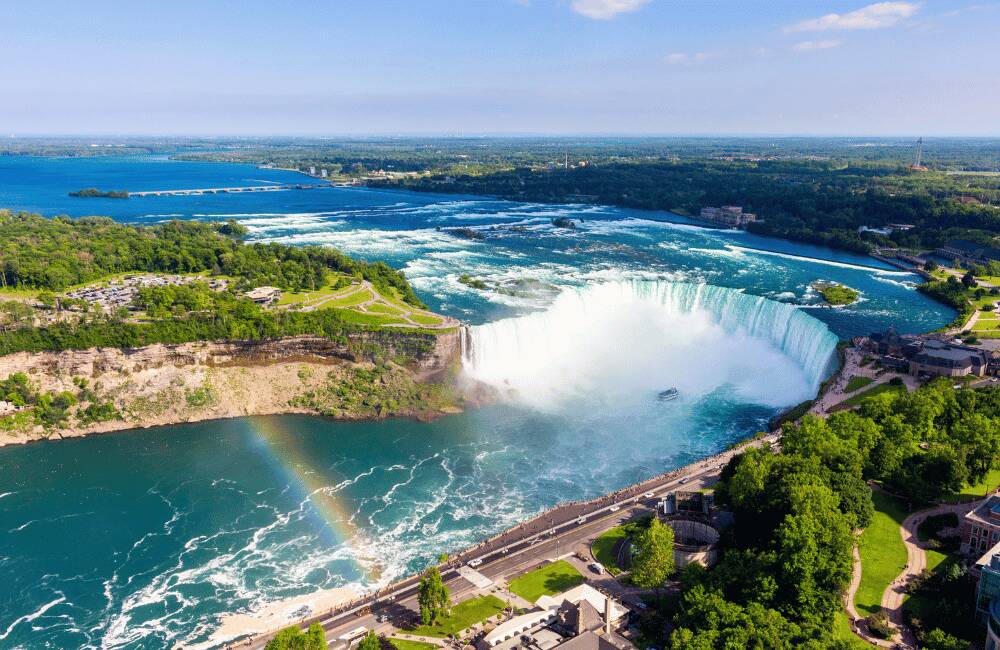
Gros Morne
Meanwhile, the Gros Morne area is home to rugged fjords and untamed coastlines that need no filters to show off their raw natural splendor. Nearby lies the historic Viking settlement of L’Anse aux Meadows, the only known site where this community established a presence in North America.
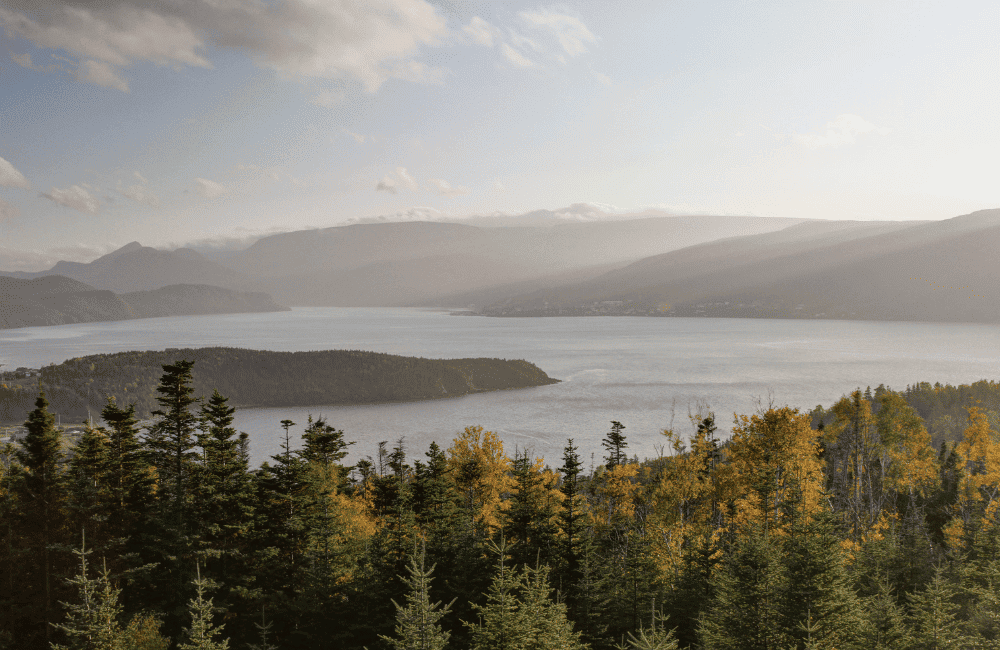
Bay of Fundy
On the Atlantic coast, the Bay of Fundy boasts two standout features: the unique rock formations at Hopewell Rocks and some of the world’s highest tides, whose rhythmic movements make the seabed appear and disappear. Equally remarkable is the Great Bear Rainforest in British Columbia—a vast temperate rainforest spanning over four million hectares. It is the exclusive habitat of the “Spirit Bears,” a rare type of black bear with white fur caused by a unique genetic trait.
The mosaic of landscapes, cities, and leisure or adventure activities that Canada offers is as vast as it is diverse. This means travelers of all kinds can enjoy unforgettable experiences across the country. Whether you’ve already decided that Canada will be your next destination or are still weighing your options, keep reading to make sure you don’t miss any of our recommendations.
When is the best time to visit Canada?
Let’s start with the basics. Choosing the right time to visit Canada is key to making the most of your trip, depending on your expectations. But don’t worry—there are no wrong choices. The best time to travel to Canada largely depends on your budget, preferred activities, and which provinces you plan to include in your itinerary. It’s important to keep in mind the country’s climate variations, as they can affect the type of activities available and the operating hours of certain attractions.

When is it most expensive to travel to Canada?
The cost of traveling to Canada varies depending on the season and tourism demand. There are two peak periods that define the high season: from June to August (summer) and from December to early January. Keep in mind that during these months, flight, and accommodation prices increase. This makes traveling to Canada more expensive at those times.
And when is it cheapest to travel to Canada?
Although variations may occur, it is generally more affordable to plan a trip to Canada in November and from March to April. These months fall within the low season, when tourist traffic tends to decrease. November, in particular, marks the transition between the end of autumn and the onset of winter, which means some outdoor activities become unavailable until the following year. On the other hand, March and April remain accessible and it’s common to find appealing promotions on flights and accommodations. In any case, try to book all services in advance to secure the most competitive rates.
What is summer like in Canada?
From June to September, the climate in most Canadian regions is mild and pleasant, with temperatures ranging between 15°C and 30°C. This creates the perfect conditions for practicing outdoor sports.
What is winter like in Canada?
If you’re looking to experience a true Canadian winter, plan your visit between December and March. These are the ideal months for skiing, ice skating, snowboarding, and enjoying winter festivals in Ottawa and Quebec. Additionally, this is the best time to witness the northern lights dancing across Canada’s night skies. Don’t miss this opportunity. For the best viewing, head as far from the coast as possible and journey north, where the skies are clearer and the lights shine brighter.
A reliable spot for seeing this celestial phenomenon is the Northwest Territories, where the aurora borealis appears on more than 200 nights per year. Yukon and Nunavut are also excellent alternatives.
Below, we share more information about essential places to include in your trip to Canada:
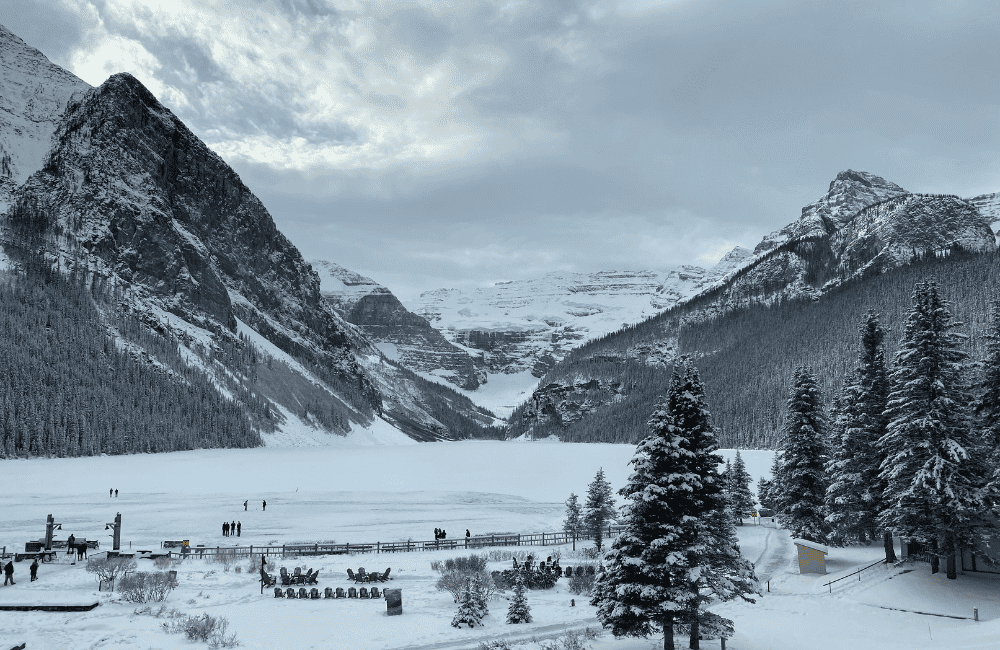
What should you not miss in Canada?
Niagara Falls
Straddling the border between the U.S. state of New York and Canada’s Ontario province, Niagara Falls is one of those places that never fails to awe visitors—which is why it tops nearly every list of must-see locations in Canada. It’s also been featured in film classics like Pirates of the Caribbean (2007), Superman II (1980), and Niagara (1953). The last of these propelled a young Marilyn Monroe to stardom and was a major box office hit in its year.
Here’s a preview of what you’ll see, though words hardly do it justice. Located about 236 meters above sea level with a drop of 51 meters, the roar of the cascading water becomes the soundtrack to a scene that is as overwhelming as it is serene. Adding to the experience are the mists that cool the air and the rainbows that color the surroundings as sunlight filters through the spray.
The three waterfalls that make up this natural wonder are Horseshoe Falls, American Falls, and Bridal Veil Falls. Though not the tallest in the world, the sheer volume of water they move is astounding—an average of 110,000 cubic meters per minute.
Visitors can now enjoy both daytime and nighttime views, and many opt to experience both. Whether basking in sunlight or lit up in dazzling colors at night, the way you experience Niagara Falls is up to you. A few suggestions: ride the elevator up the Skylon Tower for panoramic views and dine in its revolving restaurant, watch a fireworks show, take a boat ride to get up close, or even soar over the falls in a helicopter.
Emerald Lake
Nestled in the mountains of British Columbia at the heart of Yoho National Park, Emerald Lake is a striking example of Canada’s natural beauty. With its intense turquoise waters surrounded by lush forests, it’s the park’s main attraction. Some visitors rent kayaks to explore the lake, while others prefer to hike the accessible Emerald Lake Trail, which circles the lake and is suitable for all levels.
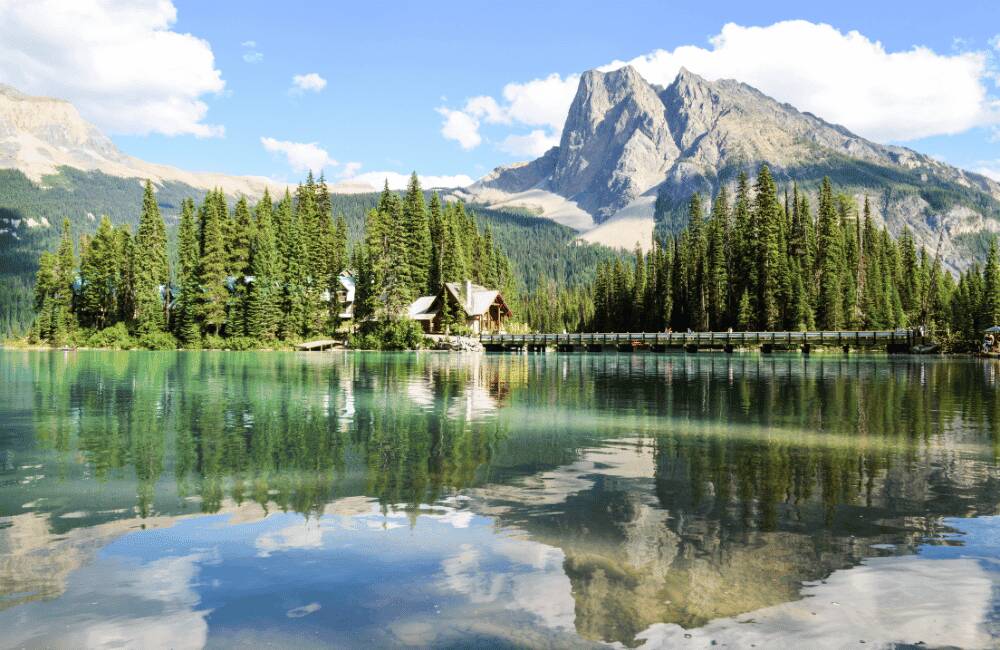
Le Château Frontenac
A true hospitality icon, Le Château Frontenac is worth visiting even if you’re not staying overnight. Located within the walls of Old Quebec, it is considered one of the most photographed hotels in the world. In 1981, it was designated a National Historic Site of Canada, and four years later, UNESCO included it in the World Heritage listing alongside the old town.
This five-star complex was also praised by Michelin as “the grand lady of hotels linked to the history of Canadian railways.” Since its construction in 1893, it has hosted major political summits, business meetings, noble gatherings—and even served as a film set for Alfred Hitchcock’s I Confess. Over its more than 130 years of operation, the hotel has welcomed distinguished guests, including former Canadian Prime Minister Pierre Elliott Trudeau, Queen Elizabeth, actor Charlie Chaplin, and singer Céline Dion.
The hotel was designed by architect Bruce Price, and brought to life by the Canadian Pacific Railway. Its location is another compelling reason to visit, offering unmatched views of the St. Lawrence River.
A stroll around Château Frontenac is like peering into North America’s most European corner. Its architecture evokes the look of French Renaissance castles, and its brick façade, slate roofs, and pointed towers preserve the essence of the luxury and sophistication of centuries past.
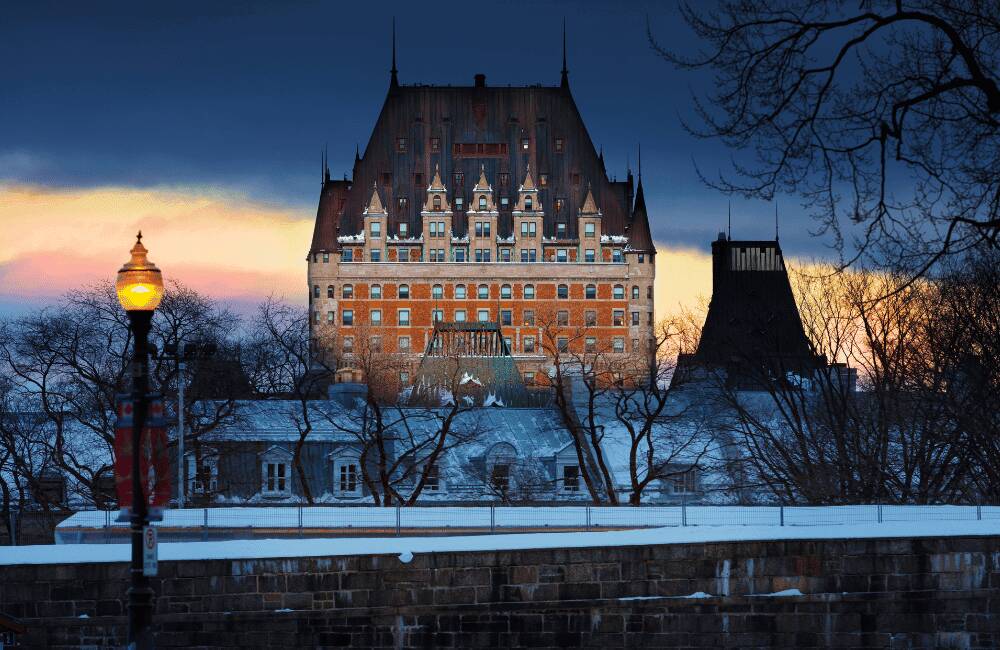
Rideau Canal
Stretching 202 kilometers, the Rideau Canal links the cities of Ottawa and Kingston through a network of rivers and lakes, attracting tourists from around the world. This engineering feat dates back to the early 19th century, when it was built for strategic and military purposes during a time of tension between Great Britain and the United States. It is also one of the first canals specifically designed to accommodate steam-powered boats, which explains the presence of several fortifications.
Recognized as a UNESCO World Heritage Site, it is the oldest operational canal in North America. Not only does it continue to serve a functional role, but it also retains most of its original structures.
During the summer months, the canal is primarily used for tourism. However, when temperatures drop in winter, the canal freezes to depths of up to seven meters, making it impossible for boats to navigate. At that point, it transforms into the world’s largest ice skating rink. You may not have considered including a canal on your list of things to see in Canada, but there are many ways to enjoy this site. One option is to take a three- to five-day cruise through towns like Battersea and Merrickville. Alternatively, you can visit Ottawa’s Bytown Museum, which tells the story of the canal.
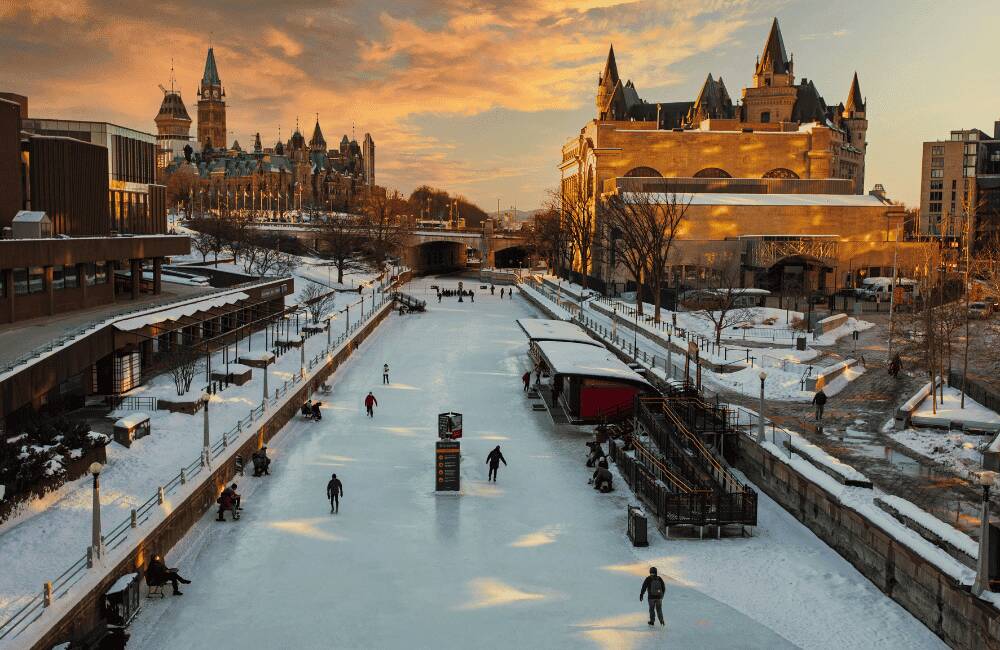
Jasper National Park
There’s no debate—nature lovers are spoiled for choice when traveling through Canada, thanks to its incredibly well-preserved national parks. Jasper National Park is one such paradise, a breath of fresh air that feels like another dimension. Located in the Canadian Rockies, it is home to a wide range of wildlife, including moose and bears. The park combines jagged peaks with shimmering lakes and ancient glaciers that silently observe visitors. Its night skies are so clear, they look as if they’ve been painted by hand.
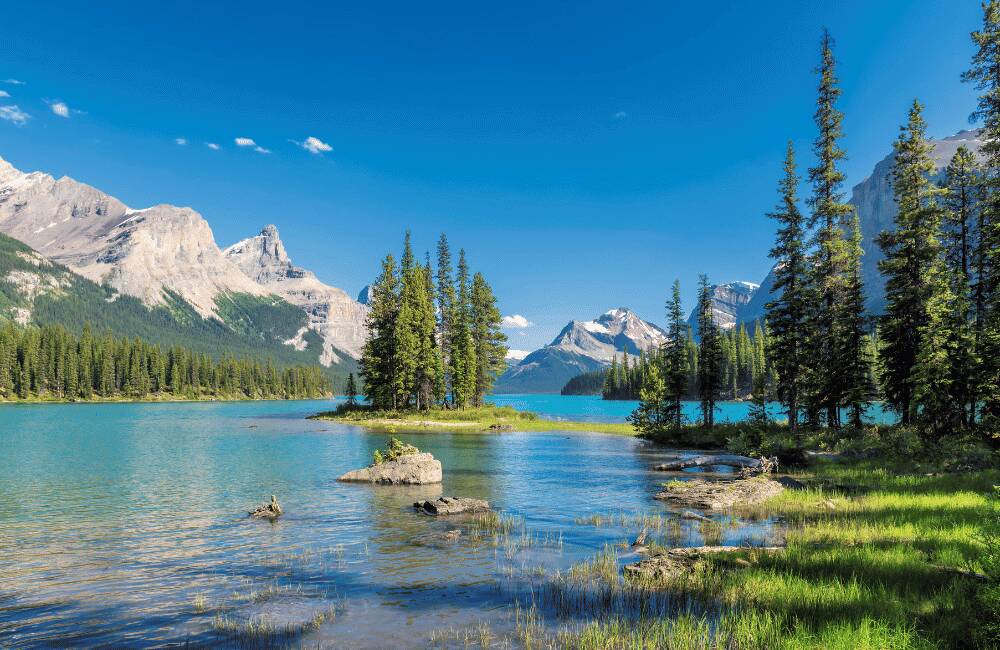
Banff National Park
In the Alberta section of the Rockies lies Banff National Park, a landscape of snow-covered peaks, wildlife, and glacial waters that has earned its reputation as one of Canada’s most popular destinations. The crown jewel here is Lake Louise, located about five kilometers from the village of the same name. It’s one of the highlights along the Icefields Parkway.
It’s no wonder Lake Louise is one of the most iconic places to see in Canada. Its hypnotic turquoise color creates an unforgettable scene when bathed in sunlight. The color comes from rock particles carried down from the Victoria Glacier. In addition to the lake’s stunning beauty, the town of Banff offers a wide range of activities—from hiking and skiing to soaking in steamy hot springs.
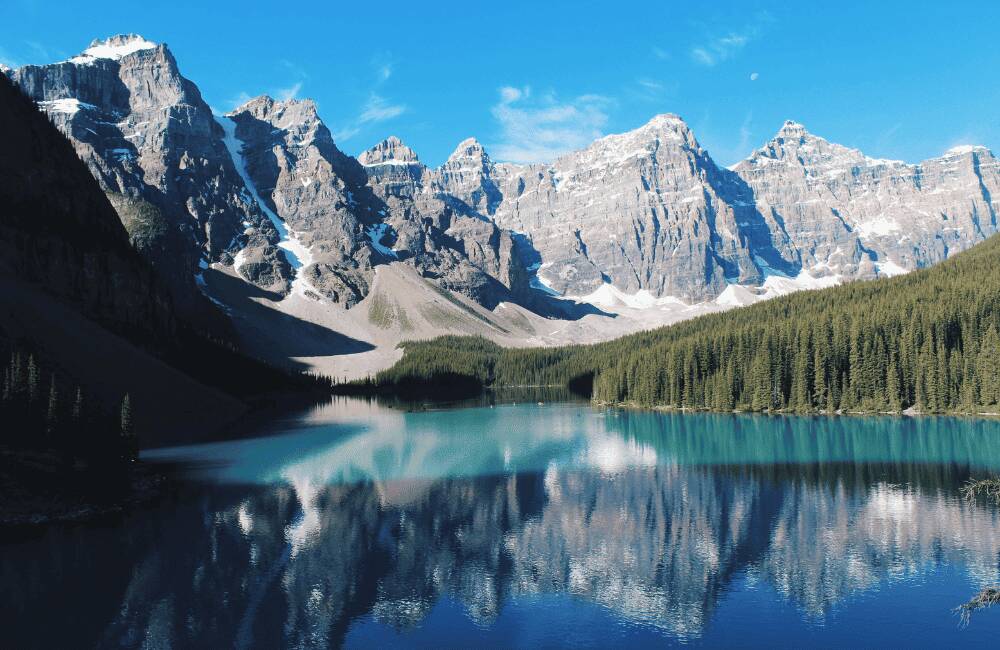
Icefields Parkway
As mentioned earlier, Highway 93 is one of the most breathtaking roads in the world—an absolute must-see in Canada. This two-lane, 230-kilometer stretch runs parallel to the Continental Divide and winds through the Canadian Rockies, connecting the towns of Jasper and Banff. It was built during the Great Depression, completed in 1940, and later expanded in 1960.
Along the route, you’ll find numerous rest stops, hiking trails, picnic areas, campgrounds, and scenic viewpoints to pause and take it all in. Expect to encounter glaciers, lakes, canyons, and towering peaks that will leave you speechless. You can choose what to see along the way, but here are some suggestions: Crowfoot Glacier, Bow Lake, Mistaya Canyon, the Saskatchewan River Crossing, the colossal Athabasca Glacier, the tiered Tangle Falls, and Sunwapta Falls, where two glacial valleys meet.
Of course, no journey along this route would be complete without exploring Jasper and Banff National Parks. One note: whether you travel the route by car or RV, you’ll need a daily pass or a Discovery Pass.
Bow Lake
This is a must-stop when driving the Icefields Parkway. Fed by the Bow Glacier, Bow Lake lies about 30 kilometers south of Banff. Nestled in the Rockies at an elevation of 1,920 meters above sea level, it is the closest lake to the source of the Bow River—from which it gets its name. It shares the same striking water color as other nearby lakes, like Peyto and Louise.
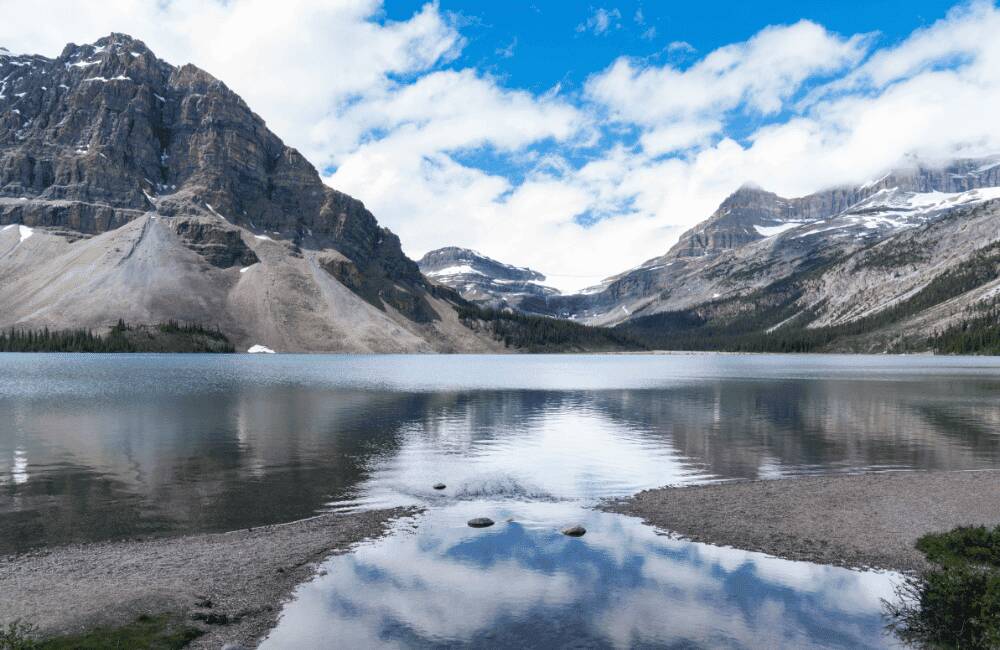
Moraine Lake
Located in the heart of the Valley of the Ten Peaks (Banff National Park), Moraine Lake is about 14 kilometers from the town of Lake Louise. It reaches its highest water level during the second half of June and is known for its distinctive blue color—typical of glacial lakes in the Icefields Parkway region.
Peyto Lake
This lake features the famous Bow Summit Lookout, which offers breathtaking panoramic views of the lake and the surrounding valley. It is one of the most notable destinations in Banff National Park. The lake is famous for its shape, which some say resembles the head of a wolf, bear, or dog—though there’s still no consensus. Once again, its glacial origin gives it a vibrant turquoise hue. As a fun fact, Peyto Lake was named in honor of Bill Peyto, an Anglo-Canadian pioneer and one of Banff National Park’s first park wardens, who passed away in 1943.
Explore Heymondo’s article on hidden gems in Canada—uncover secret spots and off-the-beaten-path adventures.
Discover Canada with Heymondo Travel Insurance
Traveling internationally to Canada requires both a budget and careful planning. Visiting this country is a dream for many, and making it a reality can be a significant undertaking. To fully enjoy Canada’s beautiful landscapes, vibrant urban centers, and majestic national parks with peace of mind, it’s essential to have travel insurance.
Travel authorities strongly recommend purchasing travel insurance for Canada, regardless of the length of your stay. Like countries such as the United States, Japan, or New Zealand, Canada has a high cost of medical care.
It is advisable for travelers to obtain insurance that includes repatriation and coverage for the transfer of remains in the event of death. Without international insurance, individuals may face significant out-of-pocket expenses. In such cases, governments typically do not assume responsibility for those without comprehensive medical coverage.
Travel insurance for Canada offers broad medical coverage and 24/7 travel assistance, every day of the year. In addition, by purchasing our travel insurance, you’ll gain access to the Heymondo App, which includes a real-time medical chat with healthcare professionals ready to answer any questions you may have.
Featured stories


